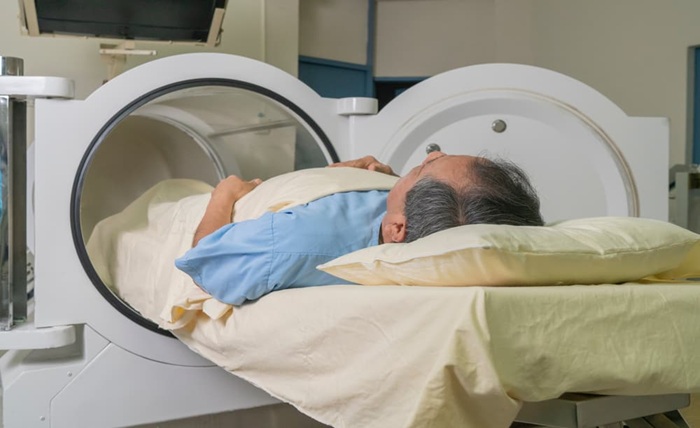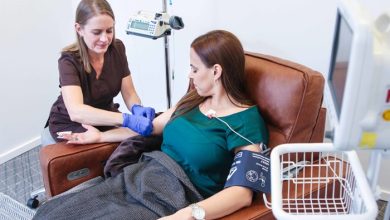
Chronic pain and inflammation affect millions of people worldwide, significantly impacting daily life, work, and overall well-being. Traditional treatment options often include medications, physical therapy, or invasive procedures, but these solutions may not always provide lasting relief. Hyperbaric oxygen therapy, commonly known as HBOT, has emerged as a promising treatment for managing chronic pain and inflammation by promoting natural healing and restoring balance in the body.
HBOT involves breathing pure oxygen in a pressurized chamber, which increases the amount of oxygen dissolved in the bloodstream. This enhanced oxygen delivery supports tissue repair, reduces inflammation, and helps alleviate pain, offering a holistic approach to managing chronic conditions.
Understanding Chronic Pain and Inflammation
Chronic pain is defined as persistent pain that lasts for more than three months, often associated with conditions such as arthritis, fibromyalgia, nerve injuries, or post-surgical recovery. Inflammation, while a natural response of the body to injury or infection, can become chronic and contribute to pain, swelling, and tissue damage when it persists.
Persistent inflammation can impair blood flow, slow healing, and increase sensitivity to pain. Addressing both the underlying inflammation and associated pain is crucial for effective management and improved quality of life.
How Hyperbaric Oxygen Therapy Works
During HBOT, patients are placed in a pressurized chamber where they breathe 100 percent oxygen at higher-than-normal atmospheric pressure. This process increases oxygen levels in the blood, allowing oxygen to reach tissues that may be deprived due to injury, inflammation, or poor circulation.
The enhanced oxygen delivery has several benefits for chronic pain and inflammation:
Reduces Swelling and Inflammation
Increased oxygen levels help regulate inflammatory responses, reduce swelling, and promote healing in damaged tissues. By minimizing inflammation, HBOT addresses one of the primary causes of chronic pain.
Promotes Tissue Repair
Oxygen is essential for cellular repair and regeneration. HBOT stimulates the production of new blood vessels, supports collagen formation, and accelerates tissue healing, which is particularly beneficial for injured muscles, joints, and soft tissues.
Improves Blood Circulation
Many chronic pain conditions are associated with poor circulation. HBOT enhances blood flow to affected areas, ensuring that nutrients and oxygen reach tissues efficiently, which supports healing and reduces pain.
Supports Nerve Healing
Chronic pain often involves nerve damage or irritation. By increasing oxygen delivery, HBOT promotes nerve regeneration and improves nerve function, which can reduce pain signals and improve overall nerve health.
Chronic Pain Conditions That Benefit from HBOT
HBOT has been used to manage various chronic pain and inflammatory conditions, including
- Arthritis: HBOT helps reduce joint inflammation, improve mobility, and decrease pain in patients with osteoarthritis or rheumatoid arthritis.
- Fibromyalgia: Increased oxygenation can help manage widespread pain and fatigue associated with fibromyalgia.
- Post-Surgical Pain: HBOT supports faster recovery and reduces inflammation after surgery, minimizing long-term discomfort.
- Sports Injuries: Muscle strains, ligament injuries, and joint damage can benefit from HBOT through faster healing and reduced inflammation.
- Nerve Pain: Peripheral neuropathy and other nerve-related conditions may improve with increased oxygen delivery to affected tissues.
Benefits of Using HBOT for Chronic Pain
Non-Invasive Treatment
Unlike surgery or injections, HBOT is non-invasive and drug-free, making it a safe option for individuals seeking alternative pain management strategies.
Enhanced Healing
By promoting tissue repair and reducing inflammation, HBOT addresses the underlying causes of chronic pain rather than merely masking symptoms.
Improved Quality of Life
Patients often experience reduced pain, increased mobility, and better overall function after HBOT, allowing them to participate more fully in daily activities.
Synergistic with Other Therapies
HBOT can be combined with physical therapy, medications, and lifestyle changes to enhance overall pain management and recovery.
Minimal Side Effects
When performed under the supervision of a qualified medical professional, HBOT is safe and generally well-tolerated. Common side effects may include temporary ear discomfort or mild fatigue, which are usually short-lived.
How HBOT Treatment Is Administered
A typical HBOT session involves the following steps
Initial Consultation
A healthcare provider evaluates the patient’s medical history, pain condition, and overall health to determine if HBOT is appropriate.
Customized Treatment Plan
The number of sessions, duration, and pressure levels are tailored to the patient’s specific condition and response to therapy.
Therapy Sessions
Patients enter a pressurized chamber and breathe pure oxygen, usually for one to two hours per session. Multiple sessions over several weeks may be recommended for optimal results.
Monitoring and Follow-Up
Healthcare providers monitor patient progress and adjust therapy as needed to maximize benefits and ensure safety.
Supporting Lifestyle Changes
To maximize the benefits of HBOT, patients are encouraged to adopt supportive lifestyle habits such as
- Maintaining a Healthy Diet: Anti-inflammatory foods and proper nutrition support tissue repair and overall health.
- Staying Active: Gentle exercise and physical therapy can improve circulation and strengthen muscles and joints.
- Managing Stress: Stress can exacerbate chronic pain and inflammation, so relaxation techniques and mindfulness can enhance therapy outcomes.
Adequate Sleep: Quality sleep supports healing and reduces pain sensitivity.
When to Consider HBOT
HBOT is most effective when used as part of a comprehensive chronic pain management plan. Patients with persistent pain, inflammation, or slow-healing injuries may benefit from consulting a specialist to determine if HBOT is appropriate for their condition. Early intervention can prevent further tissue damage and improve long-term outcomes.
It is essential to undergo HBOT under the supervision of a licensed healthcare provider who can monitor progress and ensure safety. Not all patients are suitable candidates, so a thorough evaluation is critical before beginning treatment.
Conclusion
Hyperbaric oxygen therapy plays a valuable role in treating chronic pain and inflammation by enhancing oxygen delivery to tissues, reducing swelling, and promoting natural healing. Unlike traditional pain management methods that may rely solely on medications or invasive procedures, HBOT addresses the underlying causes of pain and supports the body’s own repair mechanisms.
Patients with arthritis, fibromyalgia, post-surgical pain, nerve injuries, or sports-related injuries can benefit from HBOT as part of a comprehensive treatment plan. When combined with healthy lifestyle habits, physical therapy, and medical guidance, hyperbaric oxygen therapy can improve mobility, reduce discomfort, and enhance overall quality of life.
For anyone struggling with chronic pain or inflammation, consulting a qualified HBOT specialist offers a promising path to natural pain relief, improved healing, and long-term wellness.




